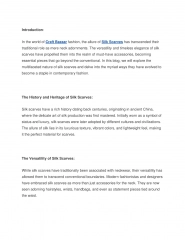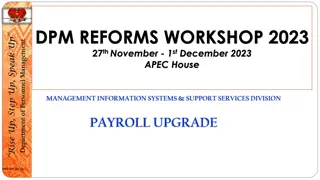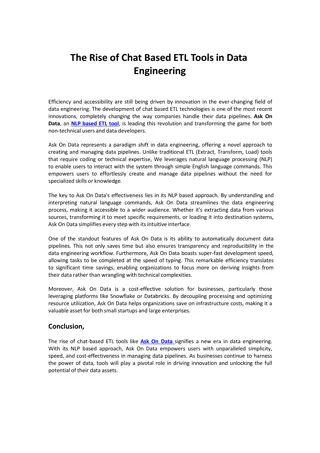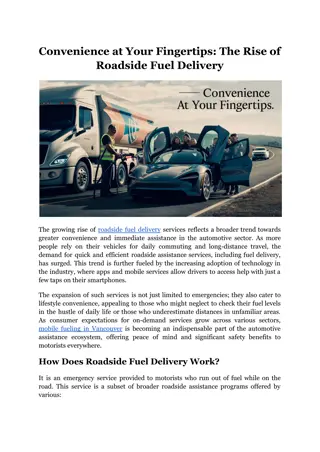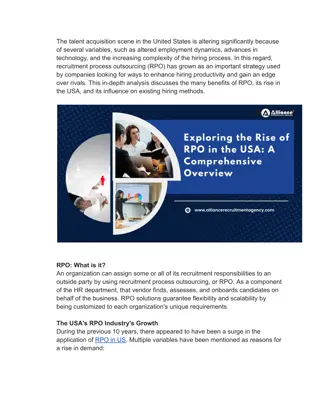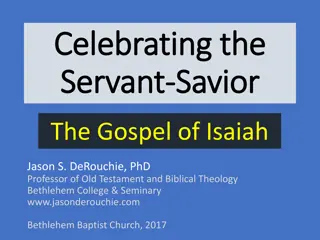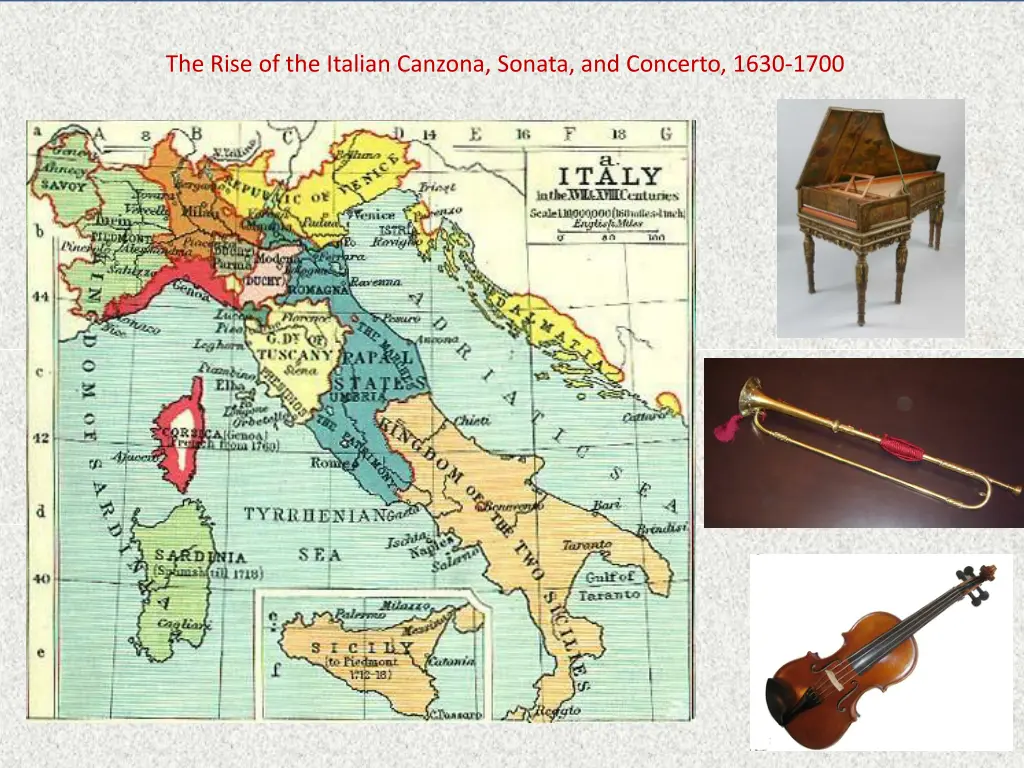
Italian Canzona, Sonata, Concerto & Rise of Instrumental Music
Explore the rise of Italian canzona, sonata, and concerto in the period 1630-1700, alongside the evolution of instrumental music's cultural significance. Witness the shift from vocal music dominance to the emergence of instrumental idiomatic display pieces and the development of pure music as its own entity. Experience the early stirrings of absolute music, the challenge of creating ever-larger musical structures, and the evolution towards abstract yet comprehensible emotional expressions.
Download Presentation

Please find below an Image/Link to download the presentation.
The content on the website is provided AS IS for your information and personal use only. It may not be sold, licensed, or shared on other websites without obtaining consent from the author. If you encounter any issues during the download, it is possible that the publisher has removed the file from their server.
You are allowed to download the files provided on this website for personal or commercial use, subject to the condition that they are used lawfully. All files are the property of their respective owners.
The content on the website is provided AS IS for your information and personal use only. It may not be sold, licensed, or shared on other websites without obtaining consent from the author.
E N D
Presentation Transcript
The Rise of the Italian Canzona, Sonata, and Concerto, 1630-1700
Vocal Music: Dominant, Highest Prestige in the 16th- and 17th Centuries (but beginning to stir: the rise of instrumental music) 1600 1700 1800
The Rise in the Cultural Significance of Instrumental Music Music without text
The Rise in the Cultural Significance of Instrumental Music Music without text Idiomatic display pieces
The Rise in the Cultural Significance of Instrumental Music Music without text Idiomatic display pieces Pure music coming to be seen as its own justification
The Rise in the Cultural Significance of Instrumental Music Music without text Idiomatic display pieces Pure music coming to be seen as its own justification Early stirrings of what would be later claimed as absolute music
The Rise in the Cultural Significance of Instrumental Music Music without text Idiomatic display pieces Pure music coming to be seen as its own justification Early stirrings of what would be later claimed as absolute music Challenge: ever-larger, self-sustaining musical structures that make sense on their own terms
The Rise in the Cultural Significance of Instrumental Music Music without text Idiomatic display pieces Pure music coming to be seen as its own justification Early stirrings of what would be later claimed as absolute music Challenge: ever-larger, self-sustaining musical structures that make sense on their own terms Challenge: abstract (textless) but comprehensible structures of feeling
The Rise in the Cultural Significance of Instrumental Music Music without text Idiomatic display pieces Pure music coming to be seen as its own justification Early stirrings of what would be later claimed as absolute music Challenge: ever-larger, self-sustaining musical structures that make sense on their own terms Challenge: abstract (textless) but comprehensible structures of feeling Challenge: abstraction as meaningful, communicable experience
The Rise in the Cultural Significance of Instrumental Music Music without text Idiomatic display pieces Pure music coming to be seen as its own justification Early stirrings of what would be later claimed as absolute music Challenge: ever-larger, self-sustaining musical structures that make sense on their own terms Challenge: abstract (textless) but comprehensible structures of feeling Challenge: abstraction as meaningful, communicable experience The historical solution: begin with smaller, comprehensible structures and, through time, expand them into ever-grander formats and forms
The Genealogy of the Multimovement Principle In Sonatas and Concertos The Seventeenth-Century Sources Include: Suites of Binary-Form Dances (originally France; then to Italy, Austria, Germany, etc.)
The Genealogy of the Multimovement Principle In Sonatas and Concertos The Seventeenth-Century Sources Include: The Multisectional Canzona Suites of Binary-Form Dances (cf. also the multisectional fantasy ) (originally France; then to Italy, Austria, Germany, etc.)
The Genealogy of the Multimovement Principle In Sonatas and Concertos The Seventeenth-Century Sources Include: The Multisectional Canzona Suites of Binary-Form Dances (cf. also the multisectional fantasy ) (originally France; then to Italy, Austria, Germany, etc.)
The Early Instrumental Canzona (17th Century) Often a dactyl-rhythm opening (or variant thereof) Opening [dactyl] figure usually opens a point of imitation Remainder of the canzona consists of three or four brief, contrasting sections often in different styles, tempos, and time signatures.
The Free, Multisectional Canzona (Early- and Mid-Seventeenth Century) (short: 3 or 4 minutes in length) C A B D (Etc.) . . . . . . Moves through differing, contrasting sections (tempi)
Girolamo Frescobaldi, Canzona sesta detta La Pesenti (published 1645) PAC PAC IAC PAC 2 4 1 3 Dissolve Dissolve Dissolve Dissolve 4/4 Ends HC New Triple-Time Section, Imitative Triple-Time Dance New Section Imitative Opening: Typical Canzona
Seventeenth-Century Canzone for Keyboard: Girolamo Frescobaldi (1583-1643) Tarquinio Merula (c. 1595-1665) Johann Jakob Froberger (1616-67)
Seventeenth-Century Canzone for Keyboard: Girolamo Frescobaldi (1583-1643) Tarquinio Merula (c. 1595-1665) Johann Jakob Froberger (1616-67) Or Seventeenth-Century Canzone for Instrumental Ensembles: Biagio Marini (1597-1665) Tarquinio Merula (c. 1595-1665) Giovanni Legrenzi (1620-1698) Maurizio Cazzati (1620-1677)
Maurizio Cazzati, Sonata 4 in G Minor, La Sampiera (Bologna, publ. 1665) (internal cadences) IAC PAC Largo Grave Allegro Homophonic interlude Head motive: lamenting chromatic descent Imitative; duple time somber, devout, hymnlike
Canzona/Sonata Sections Sonata/Concerto Movements
Canzona Sonata Sinfonia Concerto
Canzona Sonata Sinfonia Concerto By late 17th-C the term becomes uncommon
Canzona Sonata Sinfonia Concerto By late 17th-C the term becomes uncommon Tendency: fewer instruments, more polarized treble and bass
Canzona Sonata Sinfonia Concerto By late 17th-C the term becomes uncommon Tendency: music for larger ensembles and fuller textures Tendency: fewer instruments, more polarized treble and bass
Canzona Sonata Sinfonia Concerto By late 17th-C the term becomes uncommon Tendency: music for larger ensembles and fuller textures Tendency: fuller textures, but often with a contrasting internal group or, later, with a soloist or group of soloists Tendency: fewer instruments, more polarized treble and bass
Rome Bologna
Rome Bologna Venice
Rome Piazza di San Pietro (Bernini, 1650s, 1660s)
Corellis Patrons in Rome Queen Christina of Sweden (1675-1685) Cardinal Pamphili (1687-1690) Cardinal Ottoboni (1690-1708)
Corellis Patrons in Rome Trio Sonata in D, op. 4 no. 4 (publ. 1694): Giga finale Queen Christina of Sweden (1675-1685) Cardinal Pamphili (1687-1690) Cardinal Ottoboni (1690-1708)
Corellis Patrons in Rome Trio Sonata in F, op. 3 no. 1 (publ. 1689): the opening Grave Queen Christina of Sweden (1675-1685) Cardinal Pamphili (1687-1690) Cardinal Ottoboni (1690-1708)
Corellis Patrons in Rome Trio Sonata in D, op. 3 no. 2 (publ. 1689): Allegro finale Queen Christina of Sweden (1675-1685) Cardinal Pamphili (1687-1690) Cardinal Ottoboni (1690-1708)
Vividly Crystallized Major-Minor Tonality in Corelli Grounded in the creative re-use of a large number of compact, standardized voice-leading patterns (ready-to-hand formulas, now called schemata ) with functional-tonal implications.
Vividly Crystallized Major-Minor Tonality in Corelli Grounded in the creative re-use of a large number of compact, standardized voice-leading patterns (ready-to-hand formulas, now called schemata ) with functional-tonal implications. E.g.: Cadential formulas to secure a sense of the tonic through authentic and half cadences.
Vividly Crystallized Major-Minor Tonality in Corelli Grounded in the creative re-use of a large number of compact, standardized voice-leading patterns (ready-to-hand formulas, now called schemata ) with functional-tonal implications. E.g.: Cadential formulas to secure a sense of the tonic through authentic and half cadences. e.g., the complete cadential progression T P D T I(6) ii6 V I IV trigger cadence proper onset
Vividly Crystallized Major-Minor Tonality in Corelli Grounded in the creative re-use of a large number of compact, standardized voice-leading patterns (ready-to-hand formulas, now called schemata ) with functional-tonal implications. E.g.: Cadential formulas to secure a sense of the tonic through authentic and half cadences. Standardized harmonic progressions
Vividly Crystallized Major-Minor Tonality in Corelli Grounded in the creative re-use of a large number of compact, standardized voice-leading patterns (ready-to-hand formulas, now called schemata ) with functional-tonal implications. E.g.: Cadential formulas to secure a sense of the tonic through authentic and half cadences. Standardized harmonic progressions Standardized formulas for modulating to other keys (V, III, etc.)
Vividly Crystallized Major-Minor Tonality in Corelli Grounded in the creative re-use of a large number of compact, standardized voice-leading patterns (ready-to-hand formulas, now called schemata ) with functional-tonal implications. E.g.: Cadential formulas to secure a sense of the tonic through authentic and half cadences. Standardized harmonic progressions Standardized formulas for modulating to other keys (V, III, etc.) Standardized sequential formulas for Fortspinnung (ascending or descending 5-6 patterns, ascending- or descending-fifth sequences [ circle of fifths ], etc.)
Vividly Crystallized Major-Minor Tonality in Corelli Grounded in the creative re-use of a large number of compact, standardized voice-leading patterns (ready-to-hand formulas, now called schemata ) with functional-tonal implications. E.g.: Cadential formulas to secure a sense of the tonic through authentic and half cadences. Standardized harmonic progressions Standardized formulas for modulating to other keys (V, III, etc.) Standardized sequential formulas for Fortspinnung (ascending or descending 5-6 patterns, ascending- or descending-fifth sequences [ circle of fifths ], etc.) Result: the normative harmonic style [John Hill] the standardizing of harmonic functions [Richard Taruskin, 181]
Vividly Crystallized Major-Minor Tonality in Corelli Grounded in the creative re-use of a large number of compact, standardized voice-leading patterns (ready-to-hand formulas, now called schemata ) with functional-tonal implications. E.g.: Cadential formulas to secure a sense of the tonic through authentic and half cadences. Standardized harmonic progressions Standardized formulas for modulating to other keys (V, III, etc.) Standardized sequential formulas for Fortspinnung (ascending or descending 5-6 patterns, ascending- or descending-fifth sequences [ circle of fifths ], etc.) Result: the normative harmonic style [John Hill] the standardizing of harmonic functions [Richard Taruskin, 181] Example: Trio Sonata in D, op. 3 no. 2 (publ. 1689): The opening Grave
Corelli, Trio Sonata in D, op. 3 no. 2, movement 1, Grave (opening harmonic moves) V:HC (Descending fifths, with each half-bar) E E I:HC . . . . . . . . . . .(Fortspinnung) . . . . . A A A vi: PAC D D (toward D, but ) B minor walking bass Sequence: Repetition up a fifth G = IV of D Model
His Only Publications: 72 Instrumental Works 12 X 6 (Six Opus Numbers) Opp. 1-4 = Trio Sonatas (12 in each opus) Arcangelo Corelli (1653-1713)
His Only Publications: 72 Instrumental Works 12 X 6 (Six Opus Numbers) Opp. 1-4 = Trio Sonatas (12 in each opus) Op. 1 = Twelve Sonate [da chiesa] (1681) Op. 3 = Twelve Sonate [da chiesa] (1689) Arcangelo Corelli (1653-1713)
Sonata [da chiesa]: no dance movements; often in four abstract movements, designated only by tempo marking; a common pattern: slow-fast-slow-fast e.g., Corelli, Trio Sonata in D, op. 3 no. 2 (publ. 1689) S F S F Grave Allegro Allegro Adagio D D B minor (vi) D
His Only Publications: 72 Instrumental Works 12 X 6 (Six Opus Numbers) Opp. 1-4 = Trio Sonatas (12 in each opus) Op. 1 = Twelve Sonate [da chiesa] (1681) Op. 2 = Twelve Sonate da camera (1685) Op. 3 = Twelve Sonate [da chiesa] (1689) Op. 4 = Twelve Sonate da camera (1694) Arcangelo Corelli (1653-1713)
Sonata da camera: includes binary-form dance movements; A prelude + two, three, or four movements at least two of which are dances e.g., Corelli, Trio Sonata in D, op. 4 no. 4 (publ. 1694) Giga Preludio Corrente Adagio (Binary dance) Grave (Binary dance) D D B minor (vi) D





